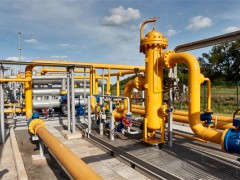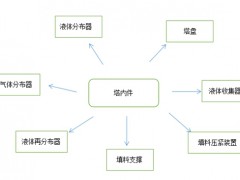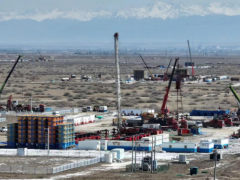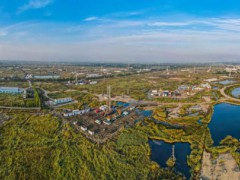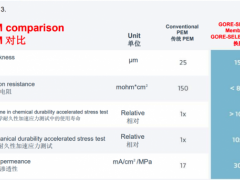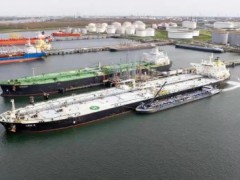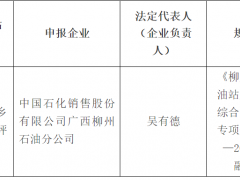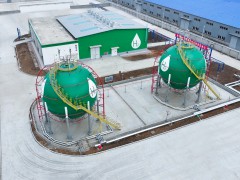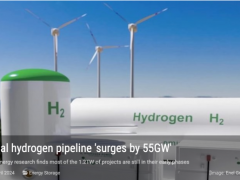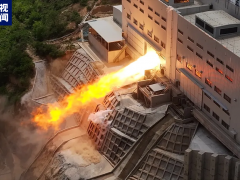美国能源信息署(EIA)在其最新一期的《短期能源展望》报告中预测,到明年年底前,美国页岩油产量将日增大约80万桶
这可能会成为现实,但在本文作者目前所查看的数据中并不明显
在本文中,作者将使用EIA生成的数据,讨论其最近在这些方面的研究结果
据美国油价网8月8日报道,由于疫情对全球经济的全面影响,在2020年3月结束的页岩钻井热潮导致了原油库存过剩,压低了原油价格。在美国和全球供应充足的情况下,原油现货交割价格降至前所未有的水平。2020年4月,原油现货价格首次出现负值。
由于经济的复苏,原油库存水平下降,在今年3月触底,美国所有地区的原油库存总量约为4.15亿桶。
在此期间,不仅库存量下降,美国的原油产量也急剧下降,因为低油价使钻井活动变得不经济。 米德兰市郊区的闲置钻机堆积如山,截至2020年6月,在用钻机数量下降至252部。进入第三季度,WTI价格突破每桶40美元,钻机开始恢复钻井作业。 在2021/22年期间,由于WTI价格在每桶80美元—120美元之间,尽管钻机日费率仍然较低,但钻井商开始利用这一优势,新增了500多部钻机,其中大约40%将在今年新增。这是一种并不经常出现的组合。
地缘政治冲突爆发以后,油价突破每桶100美元,导致汽油和柴油价格飙升,消费者在加油站遭受了巨大的痛苦。与此同时,经济复苏和对疫情限制的放松导致旅行人数激增,无论是在公路上还是在空中。监管机构和政界人士一直预计,石油公司将利用增加的收入,租用更多的钻机来压低油价。
相反,现在更明智的页岩钻井公司采取了一种资本约束的做法,其目标是在略有增长倾向的情况下将产量维持在当前水平。去年6月,在休斯敦举行的JP摩根能源会议上,先锋自然资源公司CEO谢菲尔德在《石油与天然气杂志》的一篇文章中谈到了这个问题。
谢菲尔德在6月22日的活动上告诉与会者:“我们(先锋自然资源公司)每年的资本支出只会增长5%;每次会议都有人问我这个问题。”“我们不会增长7%,8%,9%,10%或12%。”
谢菲尔德如是说,并指出当政府要求增加产量时,先锋自然资源公司对政府说了同样的话。“我们也拒绝了他们,”谢菲尔德继续说道,“我们试图让他们理解这个模式,以及模式改变的原因。”他在讨论过去的一个“繁荣—萧条”周期模式时说,在这个模式中,石油和天然气行业通过提高产量来应对,最终导致供应过剩。
其他CEO也做出了类似的评论,强调他们的资本配置重点不是产量增长,而是资本回报给股东。 美国另一家大型页岩钻井公司德文能源公司也做出了同样的承诺。德文能源公司首席执行官里克·蒙克里夫在接受彭博社记者采访时指出,该公司将继续严格控制资本配置,今年的资本支出增长目标为-5%。
但外界对页岩产量增长的自然限制却没有引起太多关注。 在经济不景气的时候,页岩钻井公司会选择开发他们最好的地点,以确保回报的收入超过钻井成本。
总而言之,按照2020年的预期速度,库存规模相当于18到25年的钻井量。如果一级钻井活动恢复到2019年的创纪录水平,那么鹰福特和巴肯页岩盆地的钻井能力可以维持68年,DJ盆地和二叠纪盆地的钻井能力可以维持11到15年。在二叠纪盆地,如果当前的井距策略没有改变,那么剩余的一级库存的总规模约为33000个地点。
数据显示,在过去一年的大部分时间里,美国所有关键盆地的产量都相对持平,尤其是2022年。由于墨西哥湾也包括在内,一些天气异常会暂时影响整体数据,冬季陆上生产也是如此。
根据EIA短期能源展望报告的建议,到明年年底,美国可能还会日增80万桶油当量。
这对油价的影响在短期内仍不明朗,因为在过去6周内,对经济可能衰退的担忧已使WTI和布伦特原油的价格每桶下跌了大约20美元。从长远来看,如果这种降低井产能的趋势得到证实,由于页岩产量的下降,我们可能会看到一个急剧的反转。
许多分析公司已把今年的退出价格目标维持在当前水平之上,高盛公司最为看好布伦特原油价格,认为布伦特原油价格在每桶135美元。如果所有这些因素加在一起,消费者的钱包可能会更痛苦,因为供应紧张导致价格上涨。
李峻 编译自 美国油价网
原文如下:
How High Can U.S. Shale Production Climb?
• The U.S. Energy Information Agency (EIA), has forecasted in their most recent edition of the Short Term Energy Outlook-STEO, a rise in U.S. production of about 800K BOEPD by the end of next year.
• This may well come to pass, but it is not evident in the data I’ve reviewed so far.
• In this article, I discuss the results of my recent research along these lines using EIA-generated data.
The shale drilling boom that ended in March of 2020, as the full effects of the pandemic hit the economy, contributed to a surplus of oil in storage that kept prices down. Richly supplied both in the U.S. and globally, the market took the spot delivery prices down to unprecedented levels. In April 2020, the spot price actually went negative for the first time ever.
As the economy recovered, inventory levels declined, bottoming out in March of this year, at about 415 mm bbls across all PADD districts.
Not only did storage decline, but U.S. production declined sharply in this period as the low prices made much of it uneconomic to drill. Rigs were stacked like cordwood in the outskirts of Midland, with the active rig count falling to 252 by June 2020. As we moved into the third quarter, WTI prices surpassed $40 and rigs began to go back to work. Over the course of 2021/22, another 500+ rigs were added with about 40% of that coming this year as drillers moved to take advantage of still low rig rates and WTI prices in the $80-$120 range. A combination that doesn’t often present itself.
The war sent oil above $100 per barrel, causing gasoline and diesel prices to soar and consumers to suffer a lot of pain at the pump. At the same time, the recovering economy and the loosening of Covid restrictions created a surge in travel, both on the open road and in the air. There has been an expectation from regulators and politicians that oil companies would take their increased revenues and hire more rigs to bring down prices. A practice that would have fit their former model of compound annual growth rate - CAGR, using borrowed capital, and nearly brought many of them to ruin in the years leading up to 2020.
Instead, the shale drillers, now wiser, have adopted a practice of capital restraint that has the objective of maintaining production at current levels with a slight bias to growth. Attending the JP Morgan Energy Conference in Houston last June, Pioneer Natural Resources, (NYSE:PXD) CEO was quoted addressing this issue in an Oil and Gas Journal article.
“We’re [Pioneer] only going to grow 5% per year; I’ve been asked that in every meeting today,” Sheffield told attendees at the June 22 event. “We’re not going to grow 7, 8, 9, 10, 12%," he said, noting that the company told the Administration the same thing when asked to increase production. "We said no to them also," Sheffield continued. "We’re trying to get them to understand the model and the reasons the model changed," he said, in discussing a past model of boom-bust cycles in which the oil and gas industry responded by ramping up production that ended in oversupply.”
Other CEOs have made similar commentary, stressing that their priority for capital allocation is not production growth, but the return of capital to shareholders. Another large shale driller, Devon Energy, (NYSE:DVN) has made the same commitment. Devon CEO, Rick Muncrief noted in a Bloomberg interview that the company would continue to be disciplined in capital allocation with a growth target for 2022 of ~5%.
What hasn’t gotten a lot of attention is an external, natural limit to growth in shale production. Shale drillers in the lean times chose to develop their best locations to ensure payouts that would return more revenue than they cost to drill. (I discussed this trend in an earlier Oilprice article last May.) The industry calls these Tier I locations. The linked Rystad article notes the following in regard to remaining Tier I locations.
“Taken together, the inventory size corresponds to 18-25 years of drilling at the pace expected in 2020. If Tier 1 activity returns to the record level of 2019, then we can have six-eight years of drilling capacity in the Eagle Ford and Bakken, and 11-15 years in the DJ Basin and Permian. In the Permian Basin, the total size of the remaining Tier 1 inventory is about 33,000 locations, assuming there are no changes in the current well spacing strategies.”
The orange line, representing the Permian basin, follows the same trajectory, with daily production declining per well by about 120 bbl per day over this time.
What it shows is that across all key basins production has been relatively flat for most of the past year, and in particular for 2022. Since the Gulf of Mexico is included in this total there are some weather anomalies that can skew the overall data temporarily, with the same being true for onshore production in wintertime.
We may yet add another 800K BOEPD by the end of next year as the EIA Short Term Energy Outlook-STEO suggests we may.
What this means for oil prices is yet unclear in the short term as for the last six weeks concerns about a possible recession have trimmed roughly $20 per barrel from the price of WTI and Brent. Longer term, if this trend toward lower well productivity bears out, we could see a sharp reversal higher, as shale output declines.
Many analyst firms have kept a YE-2022 exit price target above current levels, with Goldman Sachs the most bullish of all at $135 for Brent. If all of these things come together consumers could be in for more pain in the pocketbook, as tight supplies result in higher prices.
免责声明:本网转载自其它媒体的文章及图片,目的在于弘扬石化精神,传递更多石化信息,宣传国家石化产业政策,展示国家石化产业形象,参与国际石化产业舆论竞争,提高国际石化产业话语权,并不代表本网赞同其观点和对其真实性负责,在此我们谨向原作者和原媒体致以崇高敬意。如果您认为本站文章及图片侵犯了您的版权,请与我们联系,我们将第一时间删除。


